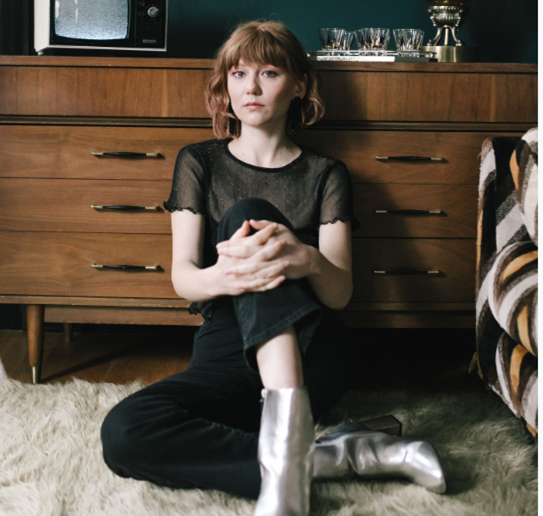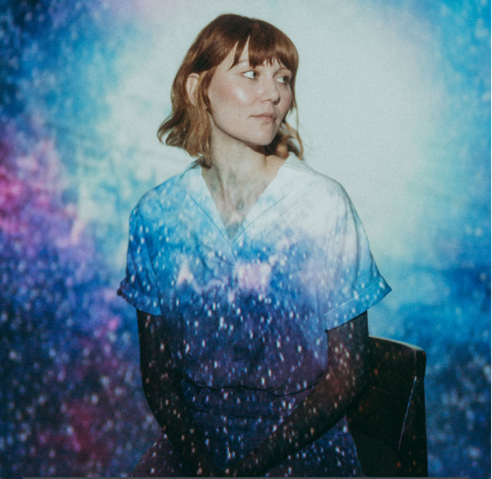
(Raffaella Mezzanzanica)
Back in October 2019, I published an article on Molly Tuttle whose title was: “Molly Tuttle: una giovane artista già diventata fonte d’ispirazione per le nuove generazioni” (“Molly Tuttle: a young artist who has already become an inspiration for the new generations” – https://bit.ly/32FdXv3 ).
Knowing about her, her music and her life made me think she was the perfect female artist to be featured in “Girls United!”.
Molly Tuttle was born 1993 in California in a family of musicians. She started playing at festivals at a very young age and since then she has become an incredible mature artist both as a songwriter and, of course, as a musician. For those who don’t know her, Molly Tuttle is an amazing guitar player, a real master of the fingerboard technique (in 2017 she was the first woman to win the International Bluegrass Music Association’s Guitar Player of the Year Award – being also the first woman ever to win such an award. The next year she won the same award, together with being named Americana Music Association’s Instrumentalist of the Year).
She has published three solo albums: Rise (EP) was released in October 2017, When You’re Ready in April 2019 and she published her latest album “…but I’d rather be with you” on August 28, 2020.
In this interview, Molly talks about her latest album, how to stay focused during tough times and why it is so important not to be afraid of the unknown.
Q.: 2020…what a year! We have all been facing unprecedented times with a pandemic and you also had to experience the tornado in Nashville, the city you’re living in. How has this affected you as a person and as an artist?
M.T.: It’s made me focus on the world around me more and feel more connected to others since we are all going through this shared experience. I have thought more about my own privileges and have felt grateful to still have a home to live in and make music in. I think everything going on in the world has made me focus more on what I want to say with my music. Art feels more important to me than ever.
Q.: You’ve grown up in California in a family devoted to music, then you moved to Nashville to follow your dreams. How has Nashville changed your vision on music and how have the sounds and music background of California influenced you?
M.T.: Growing up in California shaped who I am as a musician in many ways but I world was expanded when I moved to Nashville and met so many other people who have dedicated their lives to music. Many of the songs on my new covers record take me back to my California roots like Olympia, WA by Bay Area band Rancid and Standing on the Moon.

Q.: “…but I’d rather be with you”, your latest album, is the result of this period of lockdown and it’s an album where you rebuild and reshape some of the songs from your favorite artists. How have these crazy times had an impact on the overall concept?
Recording these songs helped me cope with the uncertain times we’re living in. Music has always been something that has brought me through tough times and with this album I took comfort in familiar songs.
Q.: “I love so many types of music, and it’s exciting to be a part of different musical worlds, but when I’m creating, I don’t think about genres or how it will fit into any particular format—it’s just music.” This is what you said about this album. I think that, through this album, people could better understand you as an artist but also as a person. Of course, some of your fans might have been surprised to listen to you covering Rancid’s “Olympia, WA” or Yeah, Yeah, Yeahs’ “Zero”. How did you choose these songs in particular? Let me tell you, they are both fantastic!
M.T.: I chose those songs because I love them and thought I could put my own spin on them in a way that contrasted the original versions. I wanted to honor some of my favorite songs by adding my own voice to them. The artists I covered come from pretty different musical backgrounds than me so this let me naturally bring something new to the songs with my style.
Q.: The title of the album comes from the lyrics of Grateful Dead’s “Standing on the Moon” which you also chose to include in the album (“Standing on the moon /With nothing left to do/A lovely view of heaven/But I’d rather be with you, be with you” ). What’s the influence of Grateful Dead on your music?
M.T.: I grew up listening to Working Mans Dead and Old And In The Way so I came to their music from the acoustic side of things. The Dead have had a huge influence on the music scene in the Bay Area so their music was woven into the fabric of where I grew up.
Q.: And then, “She’s a Rainbow”, a Rolling Stones’ classic that you’ve rebuilt as an equality hymn, with a powerful video featuring also some of your friends like Tom Morello, Sierra Hull, Nathaniel Rateliff, Ketch Secor (Old Crow Medicine Show) just to name a few. Would you tell me how did you come up with this idea for both the song and the video?
M.T.: When I heard the song I thought it would be cool from a female perspective. Then I had the idea to make the video featuring many different perspectives on feminism, intersectionality and equality. I was so honored that friends and heroes of mine took the time to think deeply about the topics and provide such inspiring answers.
Q.: “…but I’d rather be with you” has been recorded in a “socially distanced” environment, meaning that you recorded and engineered all your parts, then you sent them to the producer who put them together with those sent by the other musicians who accompanied you in this journey. How was this process? Didn’t you miss being in a studio and sharing ideas with the producer and musicians?
M.T.: I did miss being in the studio and having help with the technical side of things. There was a learning curve for me with recording everything on my own. It was also freeing to record alone and really hone in on my parts on my own time. There is pressure when you go into the studio and only have a certain amount of time to get things recorded and have people listening in the control room and taking notes. It was nice to not have those outside forces at play when I was recording my parts.
Q.: You have frequently shared the stage with other incredible artists but it’s always amazing for me to see you playing and singing with Billy Strings. How did the two of you get to know and how much do you like playing with him?
M.T.:I was roommates with Billy in Nashville for a couple years which is when we started sitting in with each other and playing together every so often. We met years ago at a music conference in a late night hotel jam.
Q.: “I still concentrate on getting a better understanding of the fingerboard, so that I have the freedom to play more of what I hear in my head. There are endless possibilities for learning and growth on an instrument.” I do believe this a very important and powerful message. Music, as any other art form, is also a matter of studying and an ongoing learning process. Why is there still the idea, especially in new generations, that making music is simple and that studying music (and the history of music) isn’t as important as other subjects?
M.T.: I think people generally underestimate the power and importance of art in society. Music is an intangible force that you can’t really place a set material value on. It’s considered risky to follow your dreams as a musician because people are afraid of the unknown, but the unknown is where creativity and magic happens!
Pictures courtesy from Molly Tuttle.
